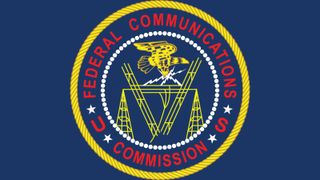FCC Opens Ultra-High Bands for Testing

The FCC has voted unanimously to explore the outer reaches of the spectrum galaxy, the millimeter waves above 95 GHz, spectrum that could help drones approach cognition speeds of computer processing and smart phone touch screens respond without even a touch.
That came in the FCC's unanimous approval of the latest Spectrum Horizons Report and Order, this one creating experimental licenses and flexible experimental licensing rules--longer license terms, transferability of licenses, sale of equipment--for that upper spectrum. It also frees up 21.2 GHz of the spectrum for unlicensed devices.
It also protects against interference with federal users already using some of the band for scientific research. The band holds promise for "data-intensive high-bandwidth applications as well as imaging and sensing operations," the FCC said.
The possibilities in the spectrum were outlined less prosaically by Prof. Ted Rappaport of New York University's Tandon School of Engineering, which has been testing the highest-band spectrum. In a presentation at the March 15 FCC public meeting at which the item was voted, he painted an exciting future for the band. He called it a historic day. And while he acknowledge there have been doubters about the usability of spectrum between 95 GHz and 3 THz (the t is for "tera"), he said that was based on omnidirectional antennas, not directional antennas that can focus the energy. He conceded there were issues of reach and scatter through objects like rain or drywall, but said they are not insurmountable, and argued that these higher bands are the future of 6G.
Rappaport did not hide his enthusiasm, saying sci-fi would become reality with data rates approaching cognition, with wide applications for robotics, communications and computing.
Neither did FCC chair Ajit Pai. Pai said Mach 1 used to be the sound barrier, but Chuck Yeager blew by that by almost 1,000 miles. He suggested the FCC was doing the same thing with this order, approaching the unapproachable. "Science fiction will become reality," he said, echoing professor Rappaport.
He said the item would incentivize innovators while also protecting exiting users. He called the item "groundbreaking, but added that there was more ground to break, including the ultimate non-experimental use in the future.
Broadcasting & Cable Newsletter
The smarter way to stay on top of broadcasting and cable industry. Sign up below
"Today, we too extend the horizon—this time with respect to spectrum," he said. "Just like Mach 1 speeds, the airwaves above 95 GHz—extremely high-frequency, short-wavelength bands of spectrum—were previously thought to be unapproachable (in our case, for wireless applications). However, recent evolutions in technology have led us to look to these “spectrum horizons” for new services and applications, such as personal health monitoring systems, see-in-the dark imaging, and centimeter-level position, as mentioned in Professor Rappaport’s presentation. "
Commissioner Michael O'Rielly said count him "all in" on the item. He did say the band has propagation problems, but experimental and unlicensed use is a good way to see what develops, then perhaps see how licensed services could operate in the band. But he also said there remained a great need to free up more unlicensed, including opening up the 5.9 and 6 GHz bands.
"One reason the U.S. leads the world in wireless is that we’ve moved quickly to open up new spectrum bands for innovative uses," added commissioner Brendan Carr. "We don’t wait around for technologies to develop fully before unlocking spectrum so that entrepreneurs have the incentives to invest and experiment.
"We continue this trend today by giving entrepreneurs greater access to spectrum above 95 GHz, which is already home to a number of pioneering technologies. This will help ensure that innovators in the U.S. have the incentives to invest and develop new technologies for the benefit of all Americans."
"These are the airwaves that will take us to infinity and beyond," said commissioner Jessica Rosenworcel.
She pointed out that the noninterfering basis after federal coordination is good for starters. But she said that the FCC should not apply old-world spectrum rules. That includes that the item explores the need for licensed use, rather than flip the scrip and focus more on unlicensed use in these "far flung" frequencies. She also pointed out that given that there are federal users experimenting in the upper, upper bands, coordination is key.
Commissioner Geoffrey Starks said they were preparing to explore uncharted territory. He said the FCC needed to pay particular attention to potential interference so the rules can hold potential violators accountable (he is a former Enforcement Bureau official). He said he had some question about the Enforcement Bureau's ability to detect interference in the high-frequency bands. He called for more resources to develop 21st century enforcement tools. He acknowledged that the FCC had a duty to find new bands for wireless, but that given that they could be critical to health and public safety, the FCC also had a duty to investigate interference.
“The Commission struck the right balance by declining to exclusively license any spectrum about 95 GHz and instead opening it for unlicensed and experimental uses," said Michael Calabrese of the Open Technology Institute. "We fully agree with Commissioner Rosenworcel’s observation that because interference is unlikely at such high frequencies, and because the best use cases remain unknown, this spectrum should be wide open for experimentation and shared use for the foreseeable future.”
The absence of an exclusive licensing element was a victory for computer companies like Microsoft and Apple, who are pushing for as much unclicensed spectrum as possible.
Contributing editor John Eggerton has been an editor and/or writer on media regulation, legislation and policy for over four decades, including covering the FCC, FTC, Congress, the major media trade associations, and the federal courts. In addition to Multichannel News and Broadcasting + Cable, his work has appeared in Radio World, TV Technology, TV Fax, This Week in Consumer Electronics, Variety and the Encyclopedia Britannica.

